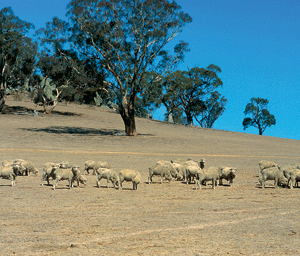
|
Published: 14 November 2011
Australia’s water in-depth
A new 178-page book designed to inform business, government and the community about the importance of one of Australia’s invaluable natural resources – water – has been published by CSIRO.

|
|
Water: Science and Solutions for Australia can be downloaded for free here. Hard copies can be purchased for $24.95 from CSIRO Publishing. |
Water: Science and Solutions for Australia provides the latest information on the status of Australia’s water resources, their future prospects and the potential for using water more effectively to meet the growing demands of cities, agriculture, heavy industries and the environment.
In an address to the recent Australian Water Association’s Water Leadership Summit, Dr Clark said CSIRO is committed to communicating its latest research and scientific advice on the major challenges and opportunities facing Australia.
‘Australians have always had a strong sense of living in a dry continent, so they value their water resources highly,’ she said.
‘Water is essential to support the economy, the natural environment and our way of life, but tensions between the differing uses of water is often at the heart of many conflicts over maintaining sustainable levels of water use.
‘This publication draws upon the scientific literature to provide a broader audience with a clear picture of the water challenges and prospects facing Australia.
‘It seeks to provide a bridge from the peer-reviewed scientific literature to a broader audience while providing the depth of science that this complex issue demands and deserves.
‘It also provides an overview of CSIRO’s long history of publicly funded research in this vitally important area.’
The book’s scientific insights include:
-
Overall, Australia has sufficient water resources to support its current uses, consuming six per cent of renewable water resources each year.
-
Australia’s arid landscape and high potential evaporation pose challenges from the high demand for water by crops and cities, and large water losses from reservoirs and inland rivers.
-
Demands on water resources are growing – from increased urban populations, increased prospects for irrigated agriculture, and the booming minerals and gas sectors – while, at the same time, society recognises the need to provide water for the environment.
-
Climate change poses an additional pressure on water resources but Australia’s adaptability to droughts and floods will help the management of further adaptation to climate change for a few decades at least.
-
Australia is in a strong position to face its water challenges: having safe and reliable supplies of water, having achieved significant water reforms, and having solid institutions and many opportunities for innovation.
Water: Science and Solutions for Australia is the second in the Science and Solutions for Australia series of books published by CSIRO. Climate Change: Science and Solutions for Australia was the first and is available for free here.



